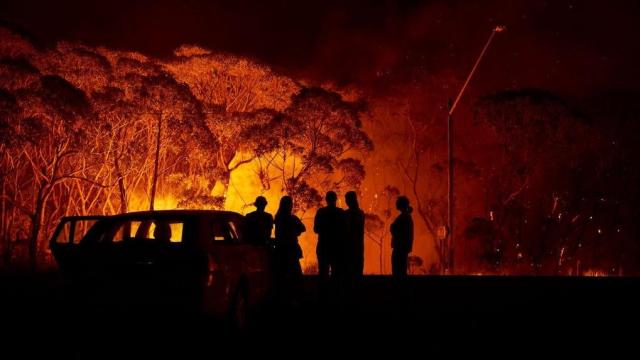The catastrophic 2019-2020 Black Summer bushfires in Australia was so extreme that it may have contributed to the rare triple-year La Niña, new research has found. In a study released in Science Advances this week, scientists found that the fires created enormous emissions that affected weather patterns globally.
It’s hard to forget the bushfires that burned through eucalyptus forests throughout southern and eastern Australia. The fires ignited in 2019, burned for months, and weren’t put out until well into January 2020. Millions of hectares burned and about 3 billion animals either died or were displaced by this catastrophic event, according to NASA.
In the study, researchers modelled how the aerosols released from the bushfires affected other parts of the world. Scientists with the National Centre for Atmospheric Research (NCAR), who led the study, explained that the huge amounts of smoke were “similar to those simulated for a major volcanic eruption, suggesting the potential for a broad range of climate responses.” The extra smoke in the atmosphere made clouds around the equatorial Pacific brighter, which meant they could reflect more sunlight back into space.
How does this connect to a global shift? La Niña is a cyclical periodic cooling of the equatorial Pacific Ocean that affects weather patterns throughout the world.
The study found that added cooling from the smoke-brightened clouds could have created the conditions that would allow La Niña to stick around for longer than usual. The researchers also found that the bushfire smoke in the atmosphere affected the intertropical convergence zone, which is where trade winds from both the Northern and Southern hemispheres come together. The zone moved northward, which created more cooling that allowed for La Niña to last longer than expected.
“Many people quickly forgot about the Australian fires, especially as the COVID pandemic exploded, but the Earth system has a long memory, and the impacts of the fires lingered for years,” John Fasullo, NCAR scientist and lead author of the study, said in a statement.
Fasullo told the Guardian that this study presents more data for a better understanding of how El Niño and La Niña may be affected by the climate crisis, which gives experts more information about what to expect in the future. “With climate change, these fires are going to become bigger, more intense and longer-lasting,” he told the Guardian. “Obviously it’s a huge negative to have such a strong, impactful fire, but it does provide a source of predictability perhaps.”
Now in 2023, researchers are keeping an eye out for El Niño’s formation, which will signify higher temperatures in the Pacific Ocean. The shift could mean dangerously high temperatures around the world; some experts worry that upcoming heat waves could be even worse than in 2016, which is an El Niño year and the hottest year on record, Reuters reported. The heat is already showing up around the world this spring. Just a few days ago, Vietnam recorded its hottest temperature ever.
